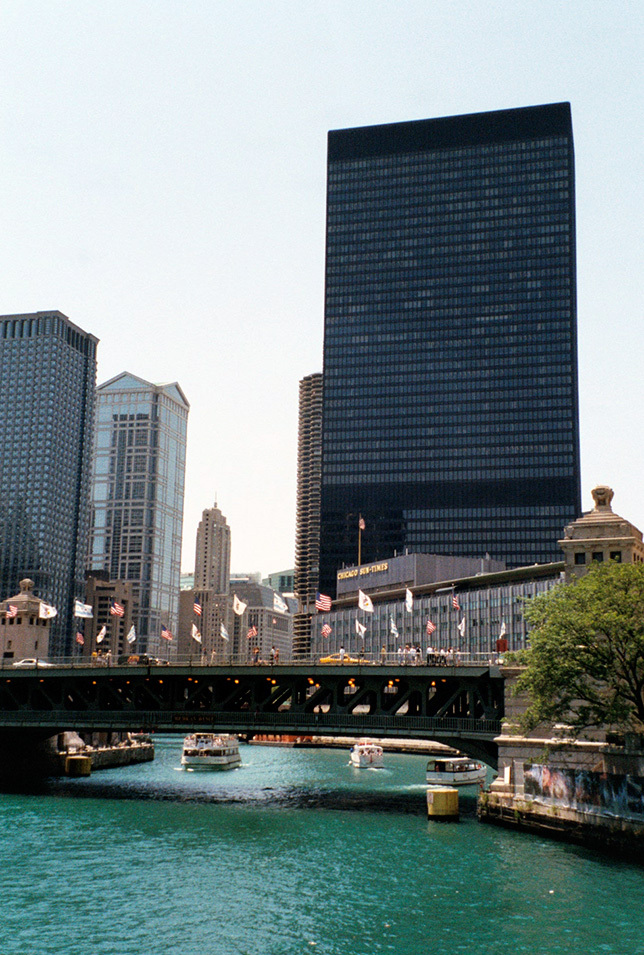This coming July, a new hotel, the Langham Chicago, is scheduled to open within Chicago's iconic IBM Building -- a/k/a 330 North Wabash -- designed by famed architect Mies van der Rohe. At a presentation to promote the hotel, architect Dirk Lohan, Mies's grandson, gave a talk that revealed some unknown facts about the 52-story office tower which opened in 1973:
1. Unlike buildings like Aqua even today, the IBM, completed in 1972, incorporated thermal breaks in its steel construction that insulated the building from outside weather conditions and made it much more energy efficient than most of the skyscrapers of its time.
2. When you walked over the IBM's south plaza, you were walking over the next day's news. The space beneath the plaza was controlled by the Chicago Sun-Times, which operated out of its own building across Wabash from the IBM until it was demolished to make way for Trump Tower. The below-grade space was where the Sun-Times stored its supply of massive roles of newsprint.
"That is why." explains Lohan, "the plaza along the river edge is basically a flat surface that goes vertically down to the river without any gesture to bring the river into this [IBM] development... I've always regretted that in a way because I think it would have been wonderful to open up the plaza and cascade down, similarly to what Trump has done since then."
3. The newsprint was delivered via the train tracks that run under the IBM, under Marina City and points west, part of an original railyard dating back to the time when the Wells Street Station was on the current site of the Merchandise Mart. These tracks ran right under the center of the IBM, and so instead of the usual central service core for elevators and staircases, the IBM actually has two cores, split on either side of the old tracks.
4. If they had followed an initial scheme done by the Mies office, the IBM might well be known today as The Bow Tie Building. That was because Wabash originally ran in a way that cut a triangle into the middle of the IBM site, making the usual rectangular box impossible.
"Mies was willing to live with it," said Lohan. "It was a triangular piece that came right into the property that was public right-of-way for Wabash Avenue, and it would have meant to build the building with a reduced width in the center of the building and then towards the north and south make it wider again as a typical office building. And we developed this scheme in the Mies office that expressed that. So it was in a way very un-Miesian, but we of course rebelled and we said why don't we go and talk to the city about IBM acquiring it. And in the end, they did."
5. "The building was also fairly expensive at that time, " recalled Lohan. "I think it cost $33.00 a square foot." Looking at the IBM's enduringly iconic place in the Chicago skyline four decades later, I'd have to say it proved to be a pretty good bargain.
For the Langham, Lohan has redesigned the southern half of the tower's entrance floor as an entrance lobby for the hotel. Lohan both selected the artwork -- a sculpture by Jaume Plensa of Crown Fountain fame, a painting by Enoc Perez, and on the plaza facing the Chicago river, a work by Taiwanese sculptor Ju Ming. Lohan is also duplicating a sofa based on one Mies had designed for one of his daughters.
